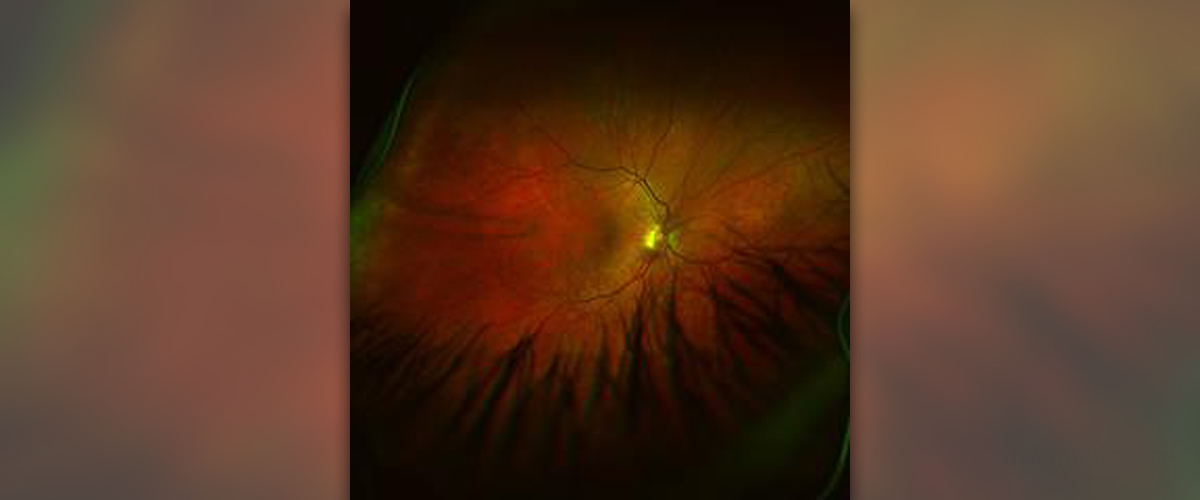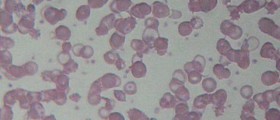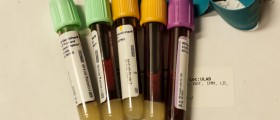
What is Sickle Cell Disease?
Sickle cell disease represents a group of disorders all of which are characterized by abnormalities of hemoglobin, a protein that gives erythrocytes their specific red color and is in charge of transfer of oxygen and carbon dioxide. In these patients hemoglobin molecules are abnormal in their appearance. This so called hemoglobin S gives erythrocytes a sickle (crescent) shape and changes the elasticity of the blood cell, making it more fragile. As a result red blood cells cannot pass small blood vessels properly without being damaged and they also tend to clump together blocking blood flow. All the mentioned reflects on oxygen delivery which can significantly decrease.
Symptoms and signs of sickle cell disease generally occur in childhood. The abnormally shaped red blood cells do not live long enough to completely fulfill their purpose and new cells are sometimes not produced in sufficient number. This explains anemia. Also, these patients are susceptible to infections and clumping. Subsequent blockage of blood vessels is responsible for periodic episodes of pain. While some patients only have to deal with mild symptoms and occasional disturbance, others are frequently hospitalized because of more complex complications.
As for anemia associated with sickle cell disease, it is responsible for health issues such as shortness of breath, fatigue and occasional yellowing of the skin and whites of the eyes (jaundice). Children suffering from sickle cell disease may experience delayed growth and development while tissues/organs that are deprive of oxygen, especially the lungs, brain and kidneys may suffer severe damage. One of the most detrimental complications of the disease is pulmonary hypertension. It affects one-third of all patients and eventually precipitates heart failure.
It is estimated that more than a million people around the world carry sickle cell gene. The condition is more distributed among people whose ancestors come from Africa. It is also frequent in Mediterranean countries such as Greece, Italy and Turkey. Other parts of the body where sickle cell disease tends to affect more individuals are Arabian Peninsula, India, South America, Central America and some parts of the Caribbean.
Now, when it comes to hemoglobin abnormalities, scientist have managed to discover what changes in this protein lead to sickling and all the accompanied health issues. Normal hemoglobin is made of two subunits of alpha-globin and beta-globin. In order for the body to produce normal beta-globulin there must not be any mutation in the HBB genes. If these are present, the gene will produce abnormal version of beta-globin i.e. it will produce hemoglobin S (HgS), the one seen in individuals suffering from sickle cell anemia. There are also other mutations which cause production of hemoglobin C (HgC) or hemoglobin E (HgE).
What is Sickle Cell Retinopathy?
Sickling is a process that generally affects all organs. One of the major negative effects of the disease is associated with retinal damage. Sickle cell retinopathy is a condition that develops due to insufficient oxygen delivery to the retina due to abnormally shaped red blood cells which easily clog small blood vessels of the organ. This is the reason why all patients suffering from sickle cell disease are supposed to undergo regular eye exams. By doing so, the disease may be diagnosed on time and irreversible damage to the eye successfully prevented.
In the majority of cases sickle cell retinopathy affects individuals with Hemoglobin S type of the disease. Left untreated or not treated on time sickle cell retinopathy may lead to severe damage to the retina and in some cases be blamed for loss of vision.
The disease goes through several stages. All changes in the retina develop as a consequence of oxygen deprivation. Lack of oxygen stimulates the organ to create new blood vessels in an attempt to compensate for this shortage. In pre-prolipherative stage the damage is reversible and can be managed successfully if identified. Now, proliferative stage leads to formation of new blood vessels in the retina, damage is more severe, there is bleeding caused by fragility of these new blood vessels and this is when symptoms actually start to occur. Patients typically report floaters or flashes of light and their vision becomes blurry. Visual impairment varies from mild to rather severe.
Fortunately, once the condition is confirmed it is treated only if there are severe changes. The goal of the treatment is to destroy all the new and abnormal blood vessels and allow the old ones to continue supplying the organ with sufficient amounts of blood. This is perfectly achieved with laser treatments. Laser therapy is performed on an outpatient basis. It lasts no longer than 10 minutes, is painless thanks to anesthetic drops all patients are administered and the only problem related to the procedure is blurred vision which does not linger for more than 20 minutes. One usually needs 2 to 3 sessions during which all abnormal blood vessels are destroyed. Recurrent bleeds into the retina and vitreous may require more invasive approach such as vitrectomy.
All in all, sickle cell retinopathy is only one of many potential complications of sickle cell disease. It can cause severe damage to the retina and jeopardize one's sight but with regular check-ups and timely treatment the problem may be easily brought under control, which prevents loss of vision in the long run.

















Your thoughts on this
Loading...